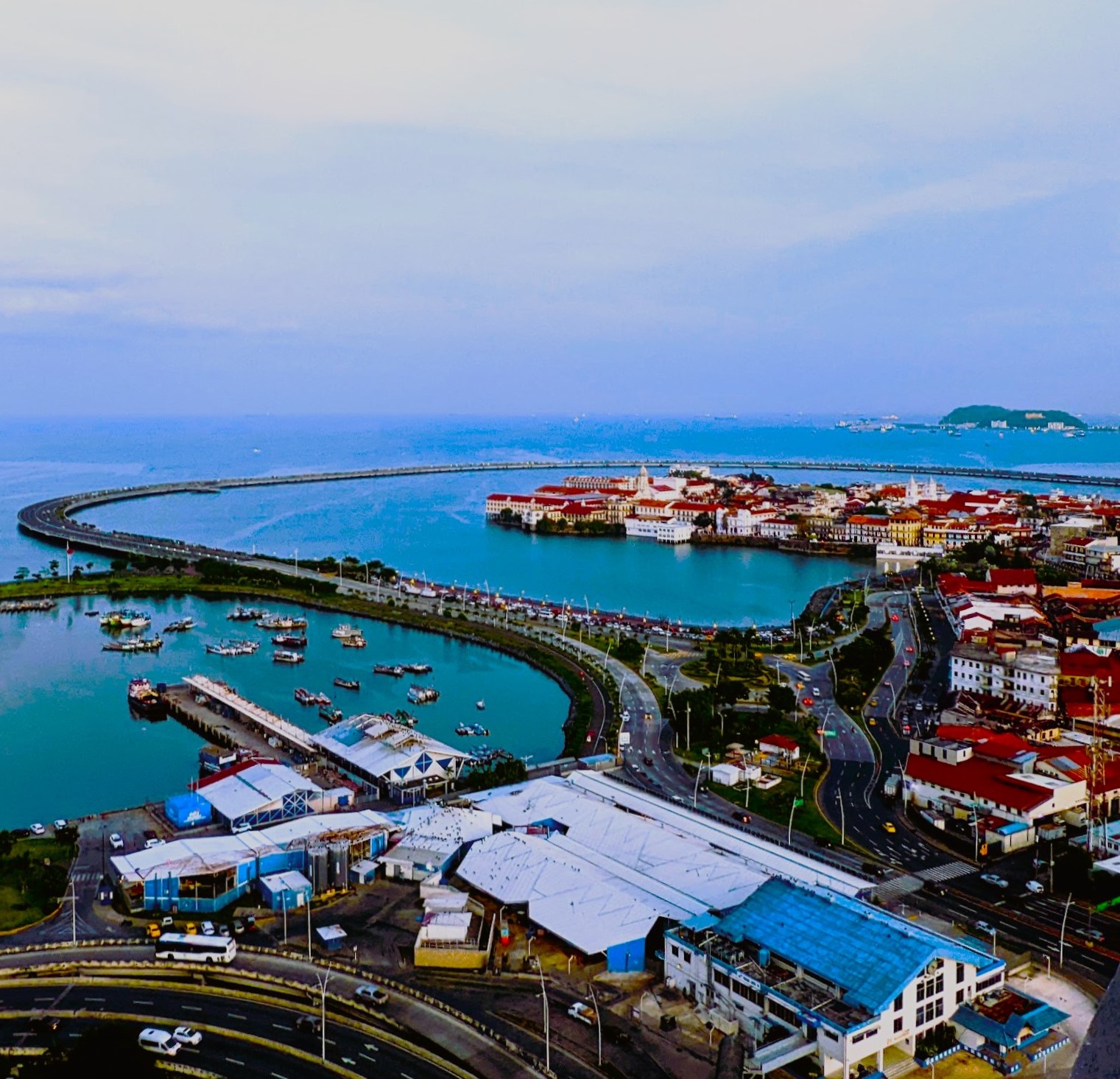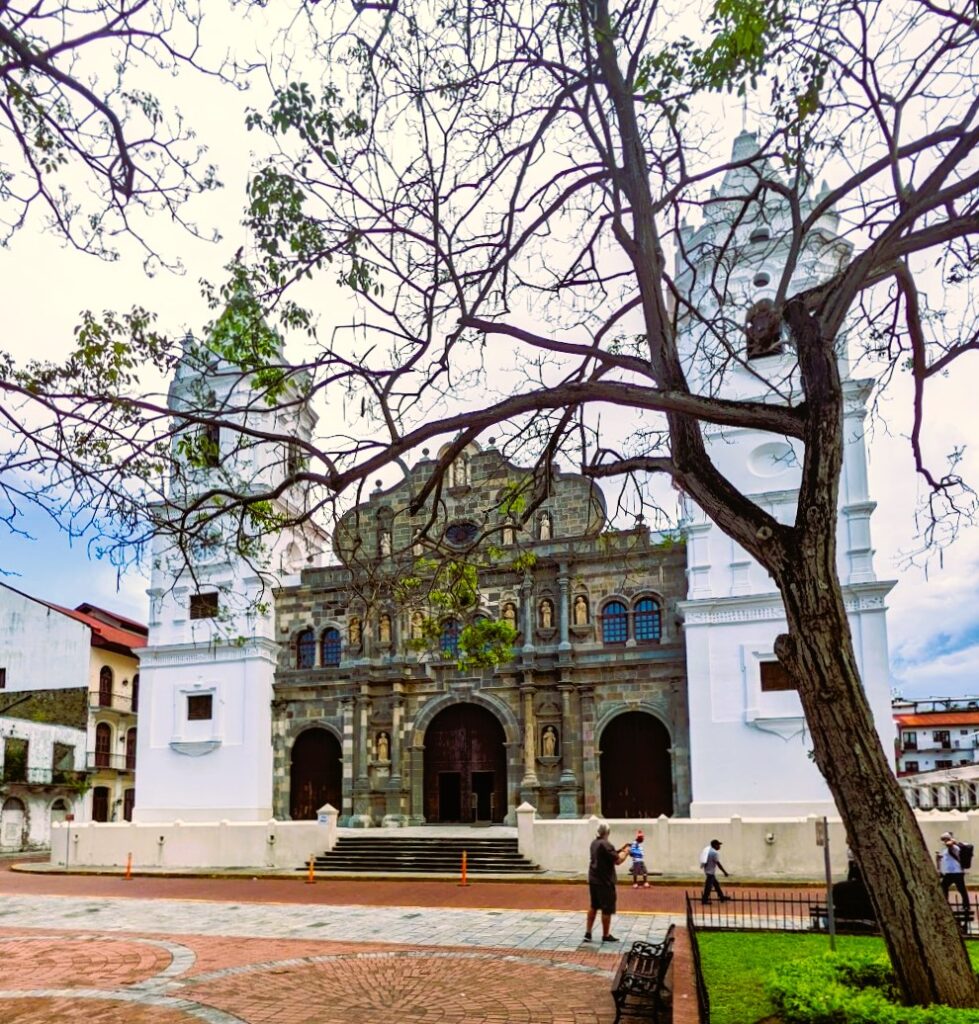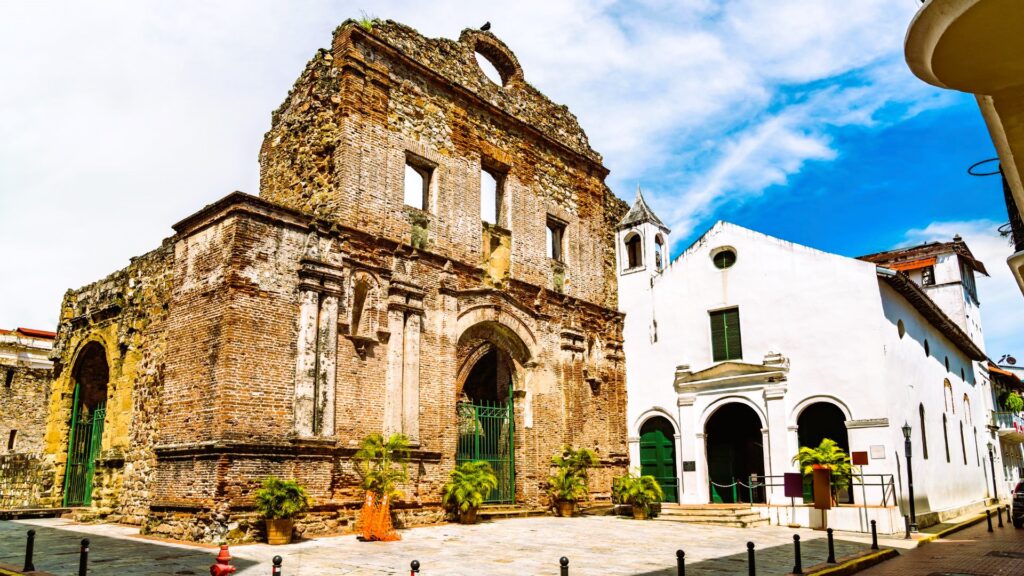
The Land of Abundance
It’s been 14 years since Panama first came across our radar as a country we might want to research for future travel, and more importantly, a potential landing spot. Speaking with a good friend in the states in 2009, he raved about his travels around the country, specifically Panama City, David, and Bocas del Toro.
It was about this time we also started researching countries where attaining residency was fairly easy, travel in and out of the country was convenient, the country was politically stable, the weather was warm year-round, the landscape was full of sandy beaches, healthcare was above average, and the cost of living was attractive.
The more research we did, the more we realized Panama checks all of the boxes. The question then became, what part of Panama would we enjoy more: the modern, seaside environment of Panama City, with beaches a short drive out of the city, or the island-hopping, rural lifestyle of a place like Bocas?

The Crossroads of the World
Recently dubbed by various media outlets as the “Singapore of the Americas,” Panama City has emerged as a prominent financial hub in Latin America. With its stable economy and business-friendly environment, the city has continued to attract international investors and corporations seeking to establish a presence in the region. Similar to Singapore, Panama’s strategic location and strong financial infrastructure have led to the establishment of numerous banks, insurance companies, and financial institutions, further bolstering its economy. Additionally, its status as a tax haven for offshore banking has also contributed to the city’s reputation as a crossroads for global finance.
All of which has contributed to more and more expats investing in the country, either through savings accounts, other financial products, or what we would be interested in: purchasing an investment property. With the real estate market in Panama City considerably less than current prices in most international cities in the States, Panama has done a good job attracting American investors and retirees alike. Additionally, with their Pensionado program and the overall cost of living being quite a bit less, Panama makes it very attractive for expats to make the move after they’ve retired and spend their retirement dollars in Panama.
Panama City
Our first impression of Panama City was how vertical it was, especially around the Bay of Panama. Staying in a high-rise in the El Maranon neighborhood, we had fabulous views of Panama City’s skyline, the bay, and the historic neighborhood of Casco Viejo. As we started to explore the city, we spent most of our first few days in Casco Viejo and El Cangrejo, two of Panama City’s more well-known neighborhoods. During our time in Panama City, we would tour and spend time in over 15 different neighborhoods, but we spent the bulk of our time in the neighborhoods below.
El Cangrejo: Probably our favorite neighborhood, El Cangrejo features cool cafes, awesome street art, and fun restaurants, mixed in with clubs and a nightlife scene that pours into the street. The location is very central, and the convenience of public transportation is a huge plus. We also like the diversity of cuisine and the pace of the streets in the heart of the neighborhood.
Casco Viejo: The historic district of Panama City, Casco Viejo is a gorgeous neighborhood of cobblestoned streets lined with colorful Spanish colonial buildings, boutique hotels, trendy cafes, and art galleries. The neighborhood has undergone significant restoration efforts in recent years, blending the old-world charm with modern amenities, but has pockets on the edges where dilapidated or abandoned buildings are still evident. Casco Viejo is definitely the most touristed area of Panama City, but it also possesses some of the best new restaurants in the city, and fun, chic bars. There are many, but two we highly recommend are Fonda Lo Que Hay and Nazca 21.
San Francisco: We enjoyed the festive restaurants, street food, and bars in this neighborhood. Located in the northern part of the city, above Punta Pacifica, the neighborhood has its share of malls, and it caters to a younger crowd, but it also has Parque Omar, Panama City’s largest park, and our favorite to hang out in.
Punta Pacifica: Our least favorite neighborhood that we spent time in, Punta Pacifica is essentially full of luxury high-rise condominiums, shopping malls, and high-end restaurants. Punta Pacifica’s location along the waterfront does offer amazing views for the residents. Additionally, the easy access to the scenic Cinta Costera is a huge benefit, but the neighborhood itself felt stale to us, and the area around the bay in Punta Pacifica was quite littered and dirty. Still, it was at the end of our walks along the Cinta Costera, so occasionally we found ourselves eating or grabbing a beverage in the neighborhood.
El Maranon: Gentrifying at an incredibly fast pace for Panamanians, El Maranon is an area that is a hodgepodge of older housing, warehouses, bus and metro stations, new high-rise condos, and major roads that box the neighborhood in. Its proximity to the Cinta Costera, the metro, Casco Viejo, and Mercado de Mariscos, at an incredible price for the month, is the reason we picked the neighborhood, and it’s exactly what we liked about it. El Maranon is about value, and probably a great investment long term for people purchasing real estate in the neighborhood.
Albrook: This neighborhood typically wouldn’t be on my recommendation list for people visiting Panama City, but we were there for over a month, and Albrook has good access via the metro, great shopping options, huge grocery stores, a modern gym, and other amenities for residents staying on the southern end of the city. It also has a great commuter airport, which we used to catch our plane to Bocas del Toro.
The New Connector of Seas
One cannot discuss Panama City’s significance without mentioning the marvel that is the Panama Canal. Completed in 1914, this 50-mile-long artificial waterway connects the Atlantic and Pacific Oceans, dramatically shortening maritime routes and significantly reducing travel times for ships. Completion of this engineering masterpiece facilitated the transit of massive cargo ships, to luxurious cruise liners, by providing a shortcut between the two oceans. The canal has become an essential part of global trade, solidifying Panama City’s status as a vital crossroads for goods and services.
Almost as impressive as the canal itself is the incredible story of its construction. Initially led and horrifically mismanaged by the builder of the Suez Canal, with French backing, the first attempt at building the canal was a dismal and utter failure. Ultimately deemed a mission of national security for the United States, Teddy Roosevelt sprung to action and ensured the canal was not only completed but became an American asset for the century to come. We not only toured various parts of the canal by car and boat but also visited the museum in Casco Viejo, which was a great experience.
Beyond the Panama Canal, the city’s connectivity is enhanced by its well-developed transportation infrastructure. Panama City has a modern international airport, Tocumen International Airport, which serves as a link for travelers flying between North, Central, and South America. The country also has an extensive road network, and the availability of various transportation options facilitates the smooth flow of goods and people within the city and its surrounding regions.
Boat Life In Panama
→Panama Canal: Boating on the canal was a lot of fun. The building of the canal was not only incredible based on the various elevations they dealt with, hence the locks, but they also had to build it in the middle of a jungle in a time when malaria and other mosquito-borne diseases were highly lethal – And that’s aside from the jagauars and everything else in the jungle that can kill you.
From the boat, we had fun seeing a couple types of monkeys up close, including Howler monkeys, and the apply named Capuchin Monkeys, along with baby crocodiles, and sloths.
← Bocas Del Toro: Deborah and I had an awesome week in Bocas. We loved the laid-back island/boating lifestyle, and we can’t wait to go back.
Bocas Del Toro
We have been fortunate enough to spend time in many different countries where island-hopping is just a normal thing. Growing up in Northern California, it’s no big deal for NorCal residents to jump in the car and go to Monterey, Tahoe, Napa, or Yosemite for the weekend – it’s just what we do. The same is true in Greece, Belize, Malaysia, the Caribbean, and other seafaring nations, except they often jump in a boat and spend their week exploring a nearby island.
Such is the case in Bocas del Toro, where this stunning archipelago is comprised of several islands, the most significant of which are Isla Colón, Isla Bastimentos, Isla Carenero, and Isla Solarte. Each island boasts its own distinct character with amazing water, beautiful landscapes, and a wonderful culture of life on the water. During our stay, we spent the bulk of our time in Bocas town on the main island of Isla Colón, but we were also able to do multiple day trips to a couple of other islands. Only spending a week in Bocas, we have so much more to explore, and we will definitely plan for more time in the area on our next trip.
These are the islands where we spent the bulk of our time on this maiden voyage.
Isla Colón: Bocas town is full of energy and fun. It’s very touristy, but still retains the small island feel and charm. The town offers the biggest selection of accommodations, restaurants, bars, and shops. Bocas Town is also known for its surrounding beaches: Red Frog Beach, named after the tiny red poison dart frogs that inhabit the area, and Playa Estrella, known for its abundance of starfish dotting the shoreline.
Isla Carenero: Isla Carenero is a laid-back island that is popular among surfers. Even if you’re not ready to hang ten, the picturesque coastline, fringed with coconut palms and sandy shores, is a great spot to unwind with a beverage and soak up the sun. We wanted to spend more time on this island but ran out of time. Next time!
Isla Bastimentos: Home to the Bastimentos National Marine Park, this island provides opportunities for snorkeling, scuba diving, and exploring lush mangroves. The park’s diverse marine life, including vibrant coral reefs and exotic fish species, captivates underwater enthusiasts. In addition to the marine wonders, the island’s dense rainforests harbor monkeys, red poison dart frogs (which we fortunately didn’t encounter), and sloths (of which we encountered many!).
Panama’s Pensionado Program
Considered to be one of the best expat incentive-laden retirement programs in the world, Panama’s Pensionado program is full of goodies for retirees. Along with international cities, great beaches, an outstanding cost of living, phenomenal weather, and easy access to the Pacific and Caribbean, Panama also offers the following incentives for you to choose this amazing Central American country as your new home.
• Import tax exemption for household goods.
• Import Tax exemption to import a new car every two years (please not that you will need to pay other taxes when importing your car. You will be exempt from the import tax only)
• 25% discounts on utility bills.
• 25% discount on airline tickets and 30% on other transportation.
• 15% discount on loans made in your name.
• 1% reduction on home mortgages for homes used for personal residence.
• 20% discount on doctor’s bills 15% on hospital services if no insurance applies.
• 15% off dental and eye exams.
• 10% discount on medicines.
• 20% discount on bills for professional and technical services.
• 50% discount on entrance to movie theaters, cultural and sporting events.
• 50% discount at hotels during Monday to Thursday, 30% on weekends.




